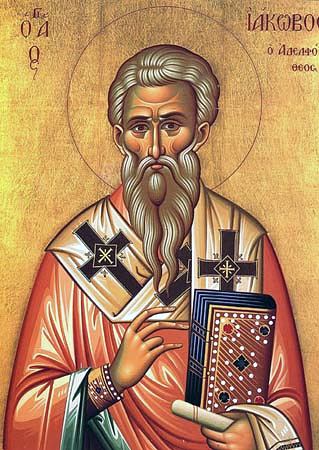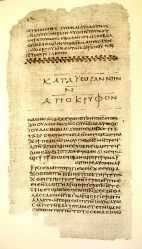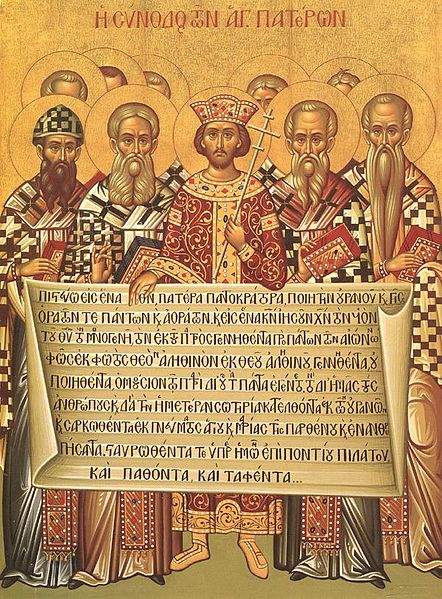Once again, I find myself consumed by documentaries into early Christianity. I’ve had this fascination with The Dead Sea Scrolls, and the Apocyrypha for years now. Every once in a while I’ll be tantalized by some new piece of the puzzle. One could say I have the tail of this biblical muse, and I suppose I must take it wherever it wants me to go.

apocrypha, (from Greek apokryptein, “to hide away”), in biblical literature, works outside an accepted canon of scripture. The history of the term’s usage indicates that it referred to a body of esoteric writings that were at first prized, later tolerated, and finally excluded. In its broadest sense apocrypha has come to mean any writings of dubious authority. A brief treatment of apocrypha follows. For full treatment, see biblical literature: Apocryphal writings.
Back before what we know today as The Bible, back in the early centuries after Jesus’ death, there was a more esoteric tradition. There was no bible yet, as that wouldn’t come together until the year 325AD.
Icon depicting the First Council of Nicaea.
[Photo Credit: Public Domain]
The First Council of Nicaea (/naɪ’si:ə/; Greek: Νίκαια /’ni:kaɪja/ Turkish: Iznik) was a council of Christian bishops convened in Nicaea in Bithynia by the Roman Emperor Constantine I in AD 325. This first ecumenical council was the first effort to attain consensus in the church through an assembly representing all of Christendom.Its main accomplishments were settlement of the Christological issue of the nature of the Son of God and his relationship to God the Father, the construction of the first part of the Creed of Nicaea, establishing uniform observance of the date of Easter, and promulgation of early canon law.
[ WIKIPEDIA ]
Emperor Constantine at the time was struggling to unite a huge, and vastly diverse peoples. To accomplish those ends, he looked to the simplicity and bridge that Christianity offered. At once born of both the idea of the one god of the Jews with the multitudinous faiths that ring the Mediterranean, it offered the glue and control he desired. At that council arranged Christian leaders Constantine had chosen based upon their similarity to the Roman war machine to which he was familiar. Top down, the structure of early Christianity was ROMAN Catholic in nature.
At this meeting of the chosen, much of the more obscure and arcane messages were excluded. No portion of the bible was born fully written and complete. Each element is a weave of different stories, tales, words, phrases and such that have been collected and disseminated in order to put forth a particular message. That which did not fit was in time excluded, and thus the book we have resting in Hotel drawers throughout the world.
So we hunt for a wisp of those early texts and tales, and seek to understand the earliest versions of the life and message of this enigmatic man. The question some have asked is whether or not the New Testament books are a product of these earliest writings, or vice versa? Therefore, one of the roles of that council was to test the antiquity of the works to be included, and a discussion surrounding the ultimate message they wished to convey was established.
One of the most intriguing groups from those earliest years, are known today as Gnostics (although they considered themselves Christian), who believed that by seeking knowledge of self, we could find God within. They believed that they could seek the word of God, and not rely on church leaders for direction in divinity.
The designation gnosticism is a term of modern scholarship. It was first used by the English poet and philosopher of religion Henry More (1614–87), who applied it to the religious groups referred to in ancient sources as gnostikoi (Greek: those who have gnosis, or “knowledge”). The Greek adjective gnostikos (“leading to knowledge” or “pertaining to knowledge”) was first used by Plato to describe the cognitive or intellectual dimension of learning, as opposed to the practical. By the 2nd century ad, however, gnostikoi had been adopted by various Christian groups, some of which used it positively as a self-designation, though others criticized this practice as a presumptuous claim of exclusive access to truth. [Encyclopedia Britannica].
Gospel of Thomas

[Photo Credit: Public Domain]
Many passages from Thomas as well appear in Luke, therefore there is some connection between these two. It is entirely possible though that they are actually separate versions of these 114 sayings of Jesus, and in connection perhaps with TWO separate Apostles attributed writings. The very fact there are similarities’ speaks instead to their antiquity, rather than the idea that one was a product of the other… I don’t believe it was an evolution in thought, as much as a REVOLUTION of thought.
To further explore these early Gospels, I think first its important to illustrate the great diversity of thought at the time. The attraction to abstract thought was shared by many, and mystical and hidden teachings and philosophies abounded, but were by no means the only divergence in what Jesus’ ultimate message was. With these early Christian writings, it is interesting to explore what they said, who they appealed to, and their antiquity.
This next Gospel is probably one of the most contentious, and the one whose point of view was most at odds with MANY Early Christians. For almost all early Christians belief in the sacred nature of the 5 Books of Moses was common, yet one voice rejected this idea.
The Gospel of Marcion
The writings of this mid 2nd century Christian teacher still contain as much controversial themes, as they did back in his own time. Marcion of Sinope believed to the exclusion of the other Gospels, in the version of Jesus’ message he adhered to.
His ideas were that the Old Grouchy God of the Old Testament(5 Books of Moses), represented the ravings of the OLD GOD. What he was offering was this message of hope offered by this NEW Savior God, who was embodied in Jesus. His ideas would today seem particularly anti-Semitic, and just the very idea of any smidge of Polytheism was at odds with many Early Christian beliefs.
Yet, it had appeal in those early centuries, as many early Christians were themselves lapsed pagans. Coming from the rural landscapes, to within the urban “civilized” centres, left these prisoners and slaves of the cities enamoured with this taste of their old ideals.
There are waves and waves of conflict and clashing of ideas, as the Iron Age landscape dies, and new ideas and philosophies are born of living cramped within close quarters. Poverty and a hunger for belonging once again to something, I believe inspired the appeal of early Christianity. We can still in fact find many references to ancient polytheistic cultures that would have influenced the early ideas giving birth within this cauldron of civilizations.
The Gospels of Marcion , are often thought to be a product of his heavy-handed editing of the early Gospels of Luke. And such, there is debate within the scholarly community of which came first, the Gospel of Marcion, or the Gospel of Luke.
Regardless though, they do in fact come under the eye of the early Christian church, and was quickly declared as ‘Heresay’ in the year 144 AD.
Gospel of Mary
The early atmosphere of open libertarian thought was attractive to many of the early Christians. At the heart of this, were women. The early Church met in homes, and so it is not surprising that this group would evolve to place women in prominent and powerful roles. Dated to approximately 125th century AD to 150th century AD, this Gospel sets the stage after the resurrection, and we find the disciples are frightened at what their future might bring, due to their association with this man.
For instance in John, she is said to be the primary witness at the resurrection, and the 4 surviving pages of the Gospel of Mary of Magdalene we are presented with the lines “that is why he loved her more than us“, one of the apostles is quoted as saying. Being set just AFTER the resurrection, the disciples of Jesus are assembled and discussing what they should do next. They are told by Mary of Magdala that she was given special, private wisdom by Jesus that the others didn’t know about. She would share this message he had given her… “we should go do what Jesus taught us, and go and preach his sayings, and share his wisdom“… often referred to by scholars as the “Good News”.
In the Gospel of Mary, we are met by the reality that Jesus and Mary Magdalene were very close. Either friends, or lovers, there were those Early Christians that believed that Mary had the private, hidden message of Jesus – even Peter is said to of come to her, begging her to tell him about the man SHE knew. These books of Mary though are riddled with holes, and is in poor shape, so many words and whole areas of text are missing… leaving questions unanswered as to the TRUE nature of Jesus’ relationship with Mary.
Yet, get too caught up in this relationship, and one misses the very strength and respect afforded Mary of Magdala. She I believe was in fact a pupil of Jesus. A follower, and one day becomes a teacher in her own right. I believe as with student and teacher, a bond forms beyond the mere exchange of ideas. I think when the physical aspect of her relationship is in the way, one looses sight of very real insight she must have had. For she was there almost at the beginning, and most certainly she was there at the end.
The one defining message I see throughout these rare glimpses, is that Jesus was unique, and something about him began a movement that wanted desperately to share the stories and teachings of this gifted man. Who he was, and what exactly his message was, may never be known in such a way to be considered scientifically viable. Yet the uniqueness of his style, and the contents of his words, resonate 2000 years later. What fragments exist from that time, are sadly very rare.
Remember too, that it was a mere 30 or so years after Jesus’ death that the Temple, and all of Jerusalem is destroyed – in 70AD. This complete destruction also erased whole libraries of early writings, therefore very little of this time can be quantified, and many of these lost Gospels are thought to represent the few remaining fragments of early Christian thought that managed to survive.
At some point, we find that what Jesus said became less important, and the church then became obsessed more with WHO he was, and WHAT he was. The literal interpretation of his words is what defines much of the Canonical Scripture, however scraps of this earlier, mystical side of his message of self discovery still remain.
